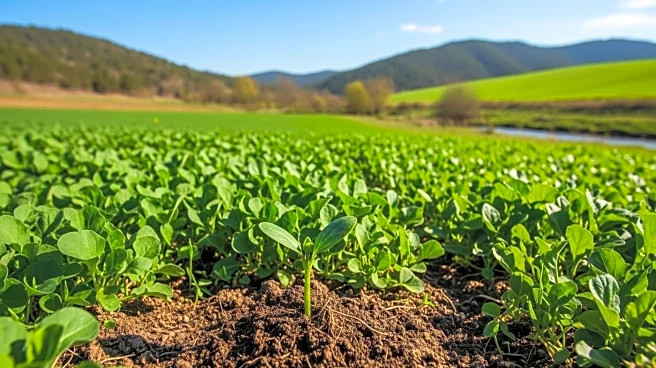What's Happening?
Researchers have identified a broad-spectrum resistance to clubroot disease in Brassica crops through a genome-wide association study. The study evaluated 244 Brassica napus accessions and pinpointed the GSL5 gene as a key factor in susceptibility. Mutations in the GSL5 gene in various Brassica species, including B. rapa, B. oleracea, and B. napus, demonstrated strong resistance to multiple pathotypes without yield penalties. This discovery offers significant potential for breeding disease-resistant crops, enhancing agricultural productivity and sustainability.
Why It's Important?
The identification of clubroot resistance in Brassica crops is a major advancement in agricultural science, addressing a critical issue that affects crop yields and farmer livelihoods. By enabling the development of resistant crop varieties, this research can lead to more sustainable farming practices and reduce reliance on chemical treatments. It has the potential to improve food security and economic stability for farmers, particularly in regions heavily affected by clubroot disease. The findings also contribute to the broader field of plant genetics and breeding, offering insights into disease resistance mechanisms.











